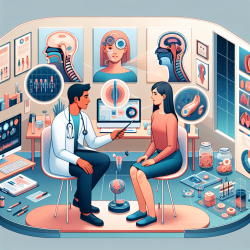Introduction
The landscape of healthcare has dramatically shifted due to the COVID-19 pandemic, necessitating innovative solutions to continue providing essential services. Pulmonary rehabilitation (PR), a critical component for managing chronic respiratory conditions, is no exception. The traditional in-person PR programs have faced significant challenges, prompting the need for effective virtual alternatives. This blog explores the integration of remote patient monitoring (RPM) in virtual PR programs, as highlighted in the research article "Incorporating remote patient monitoring in virtual pulmonary rehabilitation programs."
Understanding Remote Patient Monitoring
Remote patient monitoring involves using smart devices to track vital health metrics in real-time. This approach provides respiratory therapists (RTs) with comprehensive data on patients' heart rate, peripheral oxygen saturation (SpO2), physical activity, sleep quality, and medication adherence. Such data is invaluable for tailoring PR programs to individual needs, ensuring safety, and enhancing outcomes.
Benefits of RPM in Virtual PR Programs
- Real-Time Monitoring: RTs can access live data during exercise sessions, ensuring patients maintain safe and effective exercise intensities.
- Comprehensive Health Insights: RPM systems offer a holistic view of patients' health, allowing for timely interventions and personalized care plans.
- Improved Self-Management: Patients gain insights into their health patterns, empowering them to take proactive steps in managing their conditions.
Implementing RPM: A Step-by-Step Guide
For practitioners looking to integrate RPM into their virtual PR programs, consider the following steps:
- Equip Patients with Smart Devices: Ensure all participants receive pre-configured devices, such as pulse oximeters and activity trackers, to monitor key health metrics.
- Utilize a Web Dashboard: Use a centralized platform to access real-time and historical data, enabling continuous monitoring and assessment.
- Educate and Support Patients: Provide clear instructions and support to help patients set up and use the devices effectively.
- Monitor and Adjust Programs: Regularly review patient data to adjust exercise regimens and interventions as needed, ensuring optimal outcomes.
Challenges and Considerations
While RPM offers numerous advantages, practitioners should be aware of potential challenges, such as ensuring data privacy and managing technical issues. Anonymizing data and using secure platforms can mitigate privacy concerns. Additionally, providing technical support and resources can help patients navigate any device-related challenges.
Conclusion
Incorporating RPM into virtual PR programs represents a significant advancement in delivering effective, data-driven care. By leveraging real-time data and smart devices, practitioners can enhance patient safety, improve self-management, and achieve better health outcomes. As we continue to adapt to the evolving healthcare landscape, embracing such innovations will be crucial in providing high-quality care.
To read the original research paper, please follow this link: Incorporating remote patient monitoring in virtual pulmonary rehabilitation programs.










